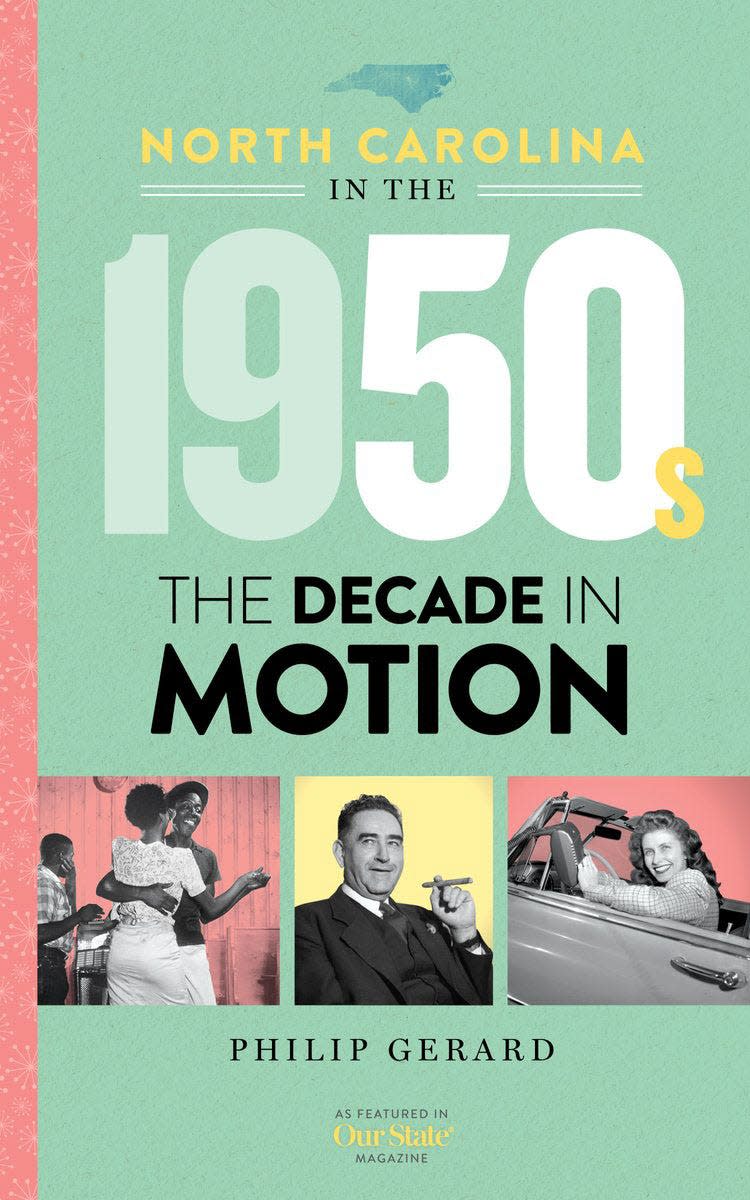Final book from late Wilmington author Philip Gerard reviews 1950s North Carolina history
At the time of his death in November, Wilmington author Philip Gerard was working on a series of volumes of North Carolina history, decade by decade, based on his columns for Our State magazine.
The last of these, "North Carolina in the 1950s: A Decade in Motion," from Durham's Blair publishing house, has just arrived, and it's a bittersweet delight. In a dozen short, sharp essays, Gerard catches the highlights of the "Happy Days" decade, the age of Ike and Elvis.
Like many writers, he points out that a lot of the revolutions of the '60s had their roots a decade earlier. He writes with verve and gusto, and it's sad to think we won't hear this voice any more.
More: Philip GerardWilmington writer Philip Gerard, who helped bring 1898 into the open, dies at 67

To paraphrase the theme song of "All in the Family," North Carolinians had it made in the 1950s. Flush with prosperity after World War II, Tar Heels went on a spending spree. Much of what they bought was cars. After the wartime drought, bright new models hit the highways in vivid colors with fins and bubble tail lights.
And there were more places for them to go. The neo-poplist Gov. Kerr Scott, "The Squire of Haw River," expanded the state's farm-to-market roads while President Eisenhower, in the name of national defense, laid out an interstate highway system. I-85, I-95 and I-40 soon crossed the state, although I-40 would not be extended to Wilmington until 1990.
As families drove, tourism boomed in what was called "The Variety Vacationland." Near Linville, Wilmington native Hugh Morton developed Grandfather Mountain as an attraction, erecting a swinging bridge between its two peaks and helping launch its Highland Games.
Tar Heels also took to the skies. Piedmont Airlines, the state's premier regional carrier, took off for the first time on Feb. 28, 1948, with a non-stop flight from Wilmington to Cincinnati.
More: Wilmington booksAuthor and UNCW professor Philip Gerard starts book series on North Carolina history
These new modes of travel posed problems for the established railroads, such as the Wilmington-based Atlantic Coast Line. While freight traffic surged, passenger rates shriveled, even as costs rose. The decline helped lead to "Black Thursday" on Dec. 10, 1955, when the railroad's board voted to override President Champion McDowell "Champ" Davis and move corporate headquarters from Wilmington to Jacksonville, Florida.
Segregation was still the law of the land as the '50s opened. At Seabreeze, just north of Carolina Beach, an all-Black resort thrived with its own hotels, amusement park and night spots. But things were changing. Returning Black veterans, who had fought for democracy and had seen a world without Jim Crow, were galvanized. A growing string of lawsuits and protests would come to a climax in 1960, when four N.C. A&T students, including Joseph McNeil of Wilmington, staged the first major sit-in to desegregate a Walgreens lunch counter in downtown Greensboro.
Gerard also covers lighter topics, like the rise of "beach music" at Carolina Beach as Malcolm Ray "Chicken" Hicks and other white boys checked out the dance moves at Seabreeze and begin stocking local juke boxes with "race" records (i.e., singles by Black musicians).
Along the way, Gerard revives the memory of forgotten heroes such as Romeo Guest, the engineer-developer who helped conceive a business-university partnership for the Piedmont and coined the name "Research Triangle."
"North Carolina in the 1950s" is hardly comprehensive. Gerard doesn't tackle such subjects as the rapid disappearance of traditional sharecropping on North Carolina farms. But his is a lively account, written in the present tense for a "here-and-now" feel, and the little volume is ideal for general readers and students.
Book review
'NORTH CAROLINA IN THE 1950s: A Decade in Motion'
By Philip Gerard
This article originally appeared on Wilmington StarNews: Wilmington author Philip Gerard's last book: North Carolina in the 50s

